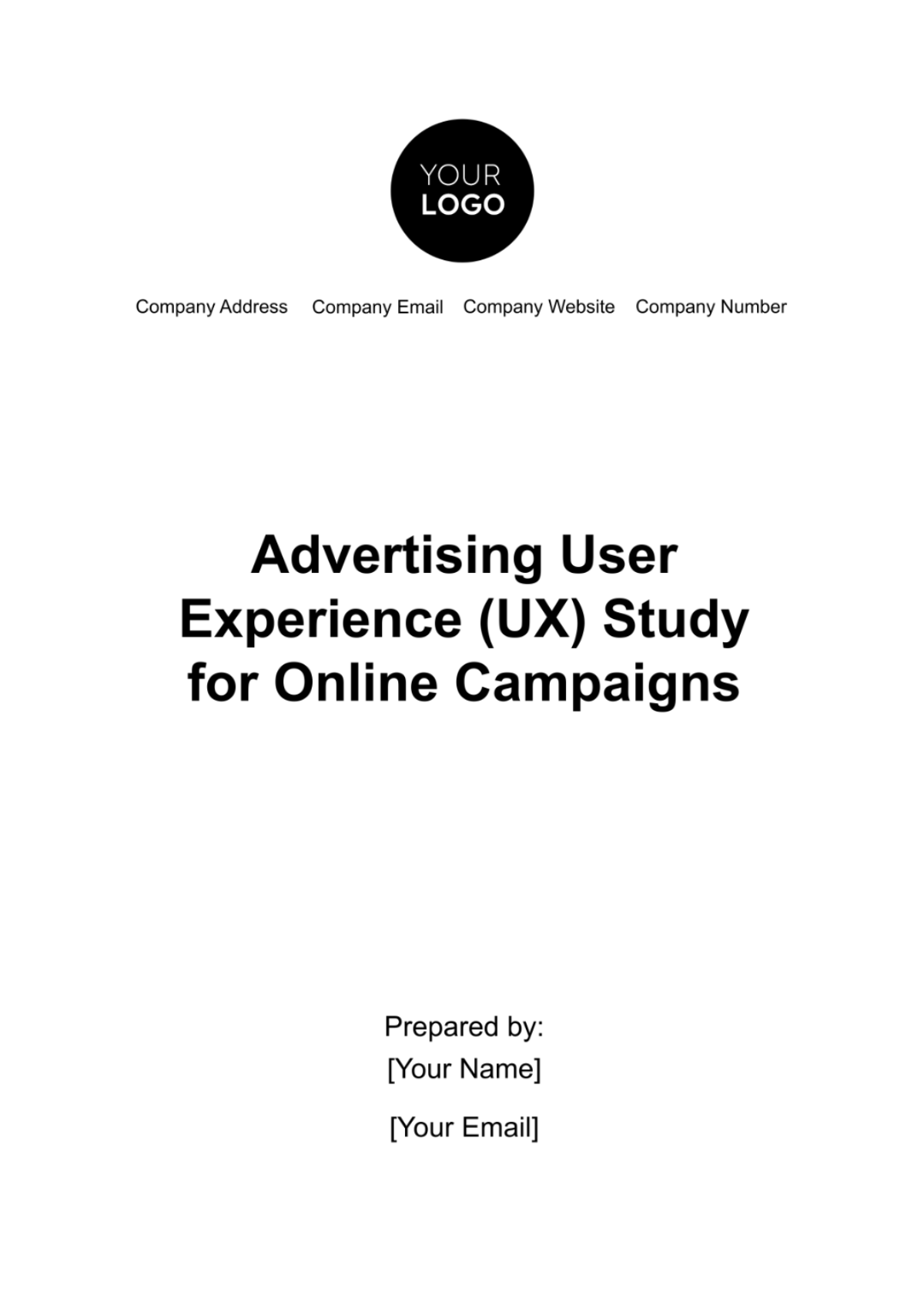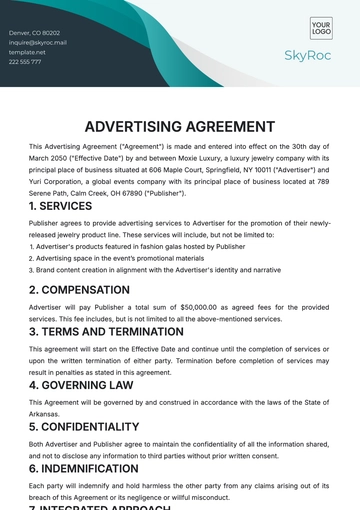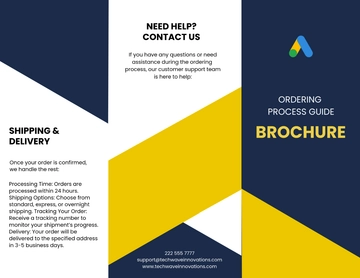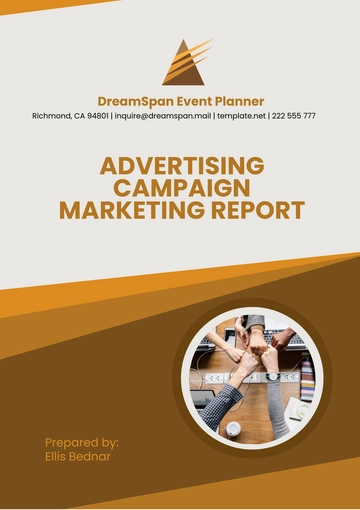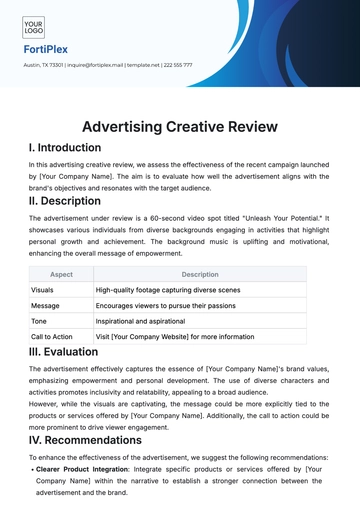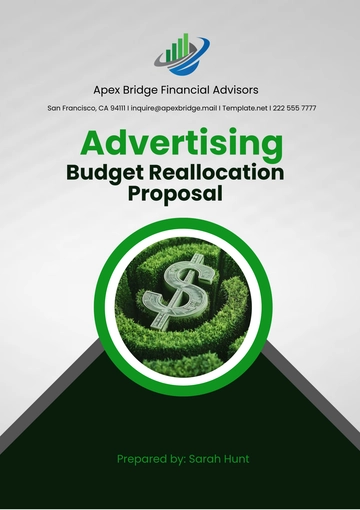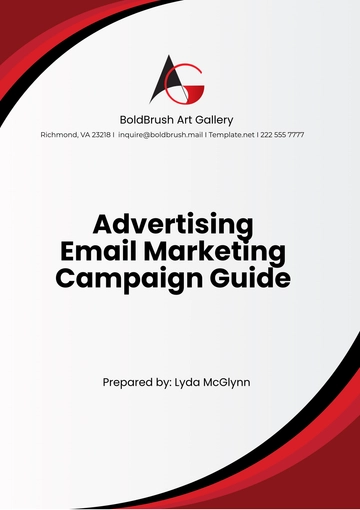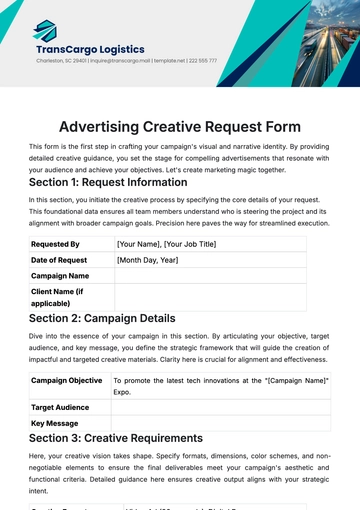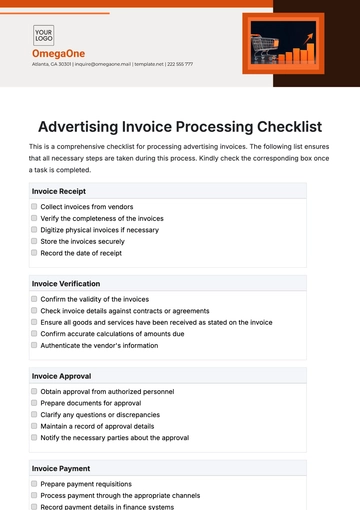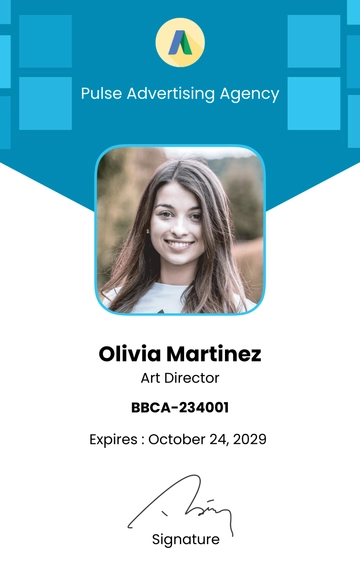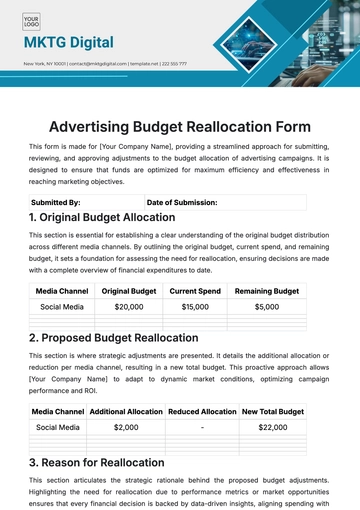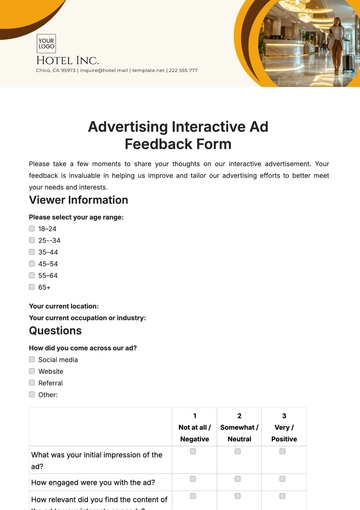Advertising User Experience (UX) Study for Online Campaigns
A. Introduction
Overview: This UX study conducted by [Your Company Name] focuses on understanding user interactions, behaviors, and perceptions towards online advertising campaigns. The aim is to gather insights that will inform the design and execution of more effective and user-centric digital ads.
Study Objectives: The primary objectives of this study are to assess the effectiveness of different ad formats, identify user preferences and pain points, and explore the impact of various design and content elements on user engagement.
B. Study Methodology
1. Research Design
A mixed-method approach combining quantitative and qualitative research methods to gain a comprehensive understanding of user experiences.
Quantitative Methods: Online surveys and analytics data to measure user engagement and interaction with ads.
Qualitative Methods: User interviews and focus groups to gather in-depth insights into user perceptions and attitudes.
2. Participant Selection
Criteria for selecting study participants, ensuring a diverse and representative sample of the target audience.
Demographics: Age, gender, location, and tech-savviness.
User Types: Frequent online shoppers, casual browsers, tech enthusiasts, etc.
C. Ad Format Analysis
1. Effectiveness of Different Ad Formats
Comparative analysis of various ad formats, including display ads, video ads, interactive ads, and native ads to determine their effectiveness in engaging users.
Ad Format | User Engagement Level | User Preference |
|---|
| | |
| | |
| | |
2. User Feedback on Ad Formats
Summary of user feedback highlighting what they liked and disliked about each ad format, including aspects, such as the intrusiveness, relevance, and creativity.
D. Content and Design Elements
1. Impact of Visual Design
This aims to analyze how different visual elements (color schemes, imagery, typography) impact user interaction and perception of ads.
2. Content Relevance and Personalization
Studying the effectiveness of content personalization and relevance in improving user engagement and reducing ad annoyance.
E. User Interaction and Behavior
1. User Engagement Metrics
Analyzing key engagement metrics such as click-through rates (CTR), time spent on ads, and conversion rates to understand user behavior.
Metric | Description |
|---|
CTR | Percentage of users who clicked on ads |
| |
| |
2. User Journey Analysis
a. Understanding the User's Path
This section of the study examines the stages a user goes through from initial exposure to an online ad to the final action or conversion. It aims to identify key touchpoints, user motivations, and barriers in the journey.
Initial Exposure: How users first encounter the ad (e.g., search engine, social media, website banner).
Engagement: Factors that influence whether a user engages with the ad (e.g., design, relevance).
Decision-Making: What considerations users have before taking the desired action (e.g., product interest, trust, pricing).
User Journey Stages
User Journey Stage | Description | Key Influencing Factors |
|---|
Discovery | User sees the ad for the first time | Ad placement, visual appeal |
| | |
| | |
F. User Attitudes and Perceptions
A. General Attitudes towards Online Advertising
This section explores the overall sentiments that users have towards online ads. It looks into how different aspects of advertising impact user perceptions and attitudes.
Ad Trustworthiness: How credible users find the ads.
Annoyance Levels: Degree of irritation caused by ad intrusiveness or irrelevance.
Perceived Value: Whether users see the ads as informative or beneficial.
B. Impact of Ad Frequency and Placement
Analysis of how often users see ads and where they are placed affects their attitudes and experiences with the ad.
Ad Fatigue: User reactions to seeing the same ad repeatedly.
Placement Sensitivity: How placement on different platforms or website areas impacts ad perception.
User Attitudes and Perceptions
Aspect | User Feedback | Impact on User Experience |
|---|
Trustworthiness | Most users find ads on trusted platforms more credible | Positive impact on engagement |
| | |
| | |
G. Ad Personalization and User Privacy
1. Balancing Personalization with Privacy Concerns
This section explores how ad personalization strategies align with user privacy concerns. It assesses the effectiveness of personalized ads and how users perceive data use for ad targeting.
Insights on Personalization vs. Privacy
Personalization Aspect | User Feedback | Impact on User Experience |
|---|
Targeted Ads | High engagement but privacy concerns raised | Positive engagement tempered by privacy worries |
| | |
| | |
H. Accessibility and Inclusivity in Online Advertising
1. Ensuring Ad Accessibility
This section examines the accessibility of online ads for users with disabilities. It evaluates how accessible design practices are implemented in online advertising and their impact on user experience.
Accessibility Features: Use of alt text, subtitles, and screen reader compatibility.
User Experiences of People with Disabilities: Gathering feedback from users with visual, auditory, and other impairments.
2. Promoting Inclusivity in Ad Content
Exploring the representation of diverse groups in advertising content and its effect on user perception and brand affinity.
Accessibility and Inclusivity Insights
Inclusivity Aspect | User Feedback | Impact on User Experience |
|---|
Accessibility Features | Highly appreciated by users with disabilities | Leads to positive brand perception and wider reach |
| | |
| | |
I. Conclusion
The UX study conducted by [Your Company Name] provides valuable insights into how users interact with and perceive online advertising campaigns. Key findings indicate a preference for interactive and personalized ad content, the importance of non-intrusive and visually appealing designs, and varying effectiveness across different ad formats. These insights will inform future campaign strategies to enhance user experience and engagement.
Advertising Templates @ Template.net
